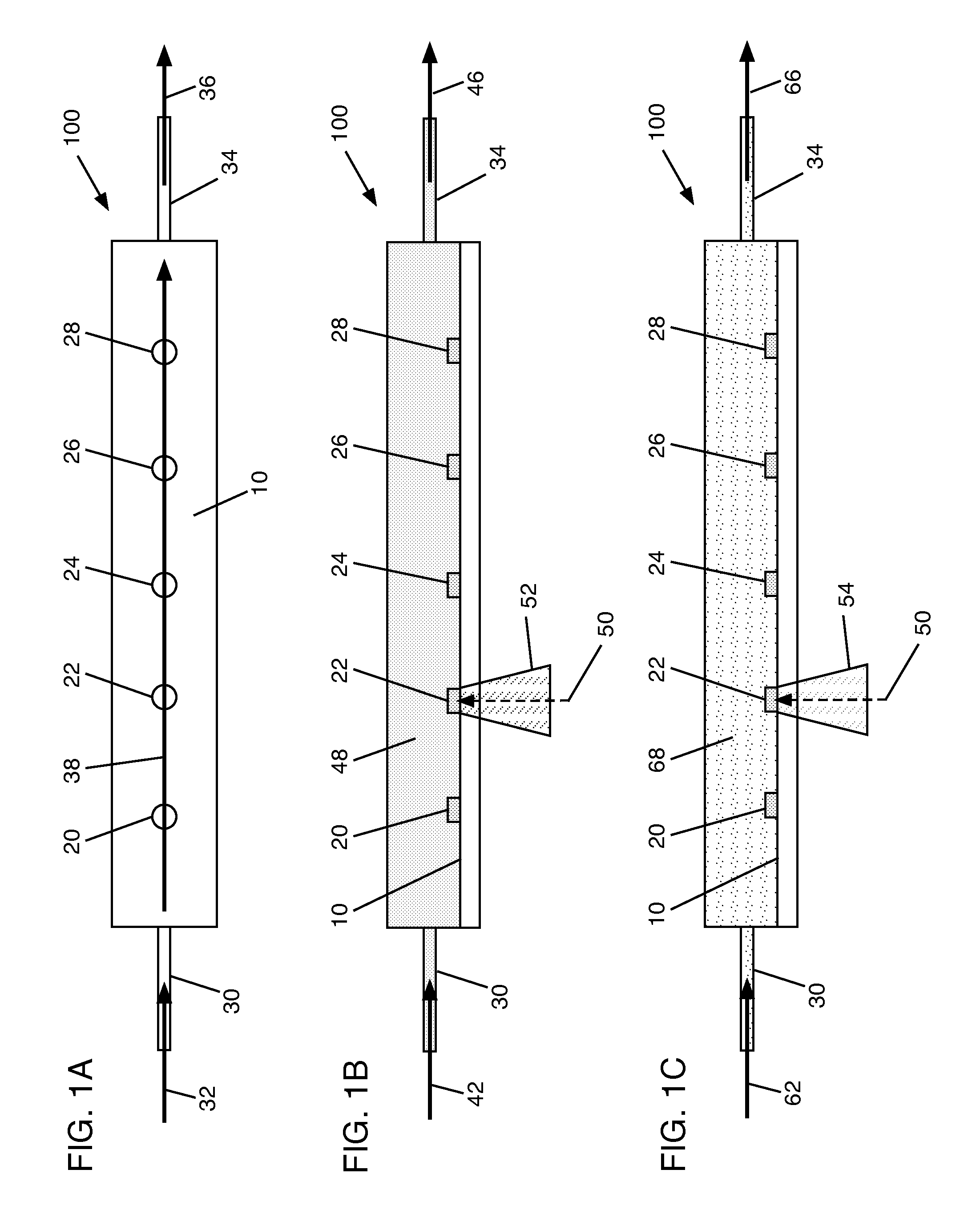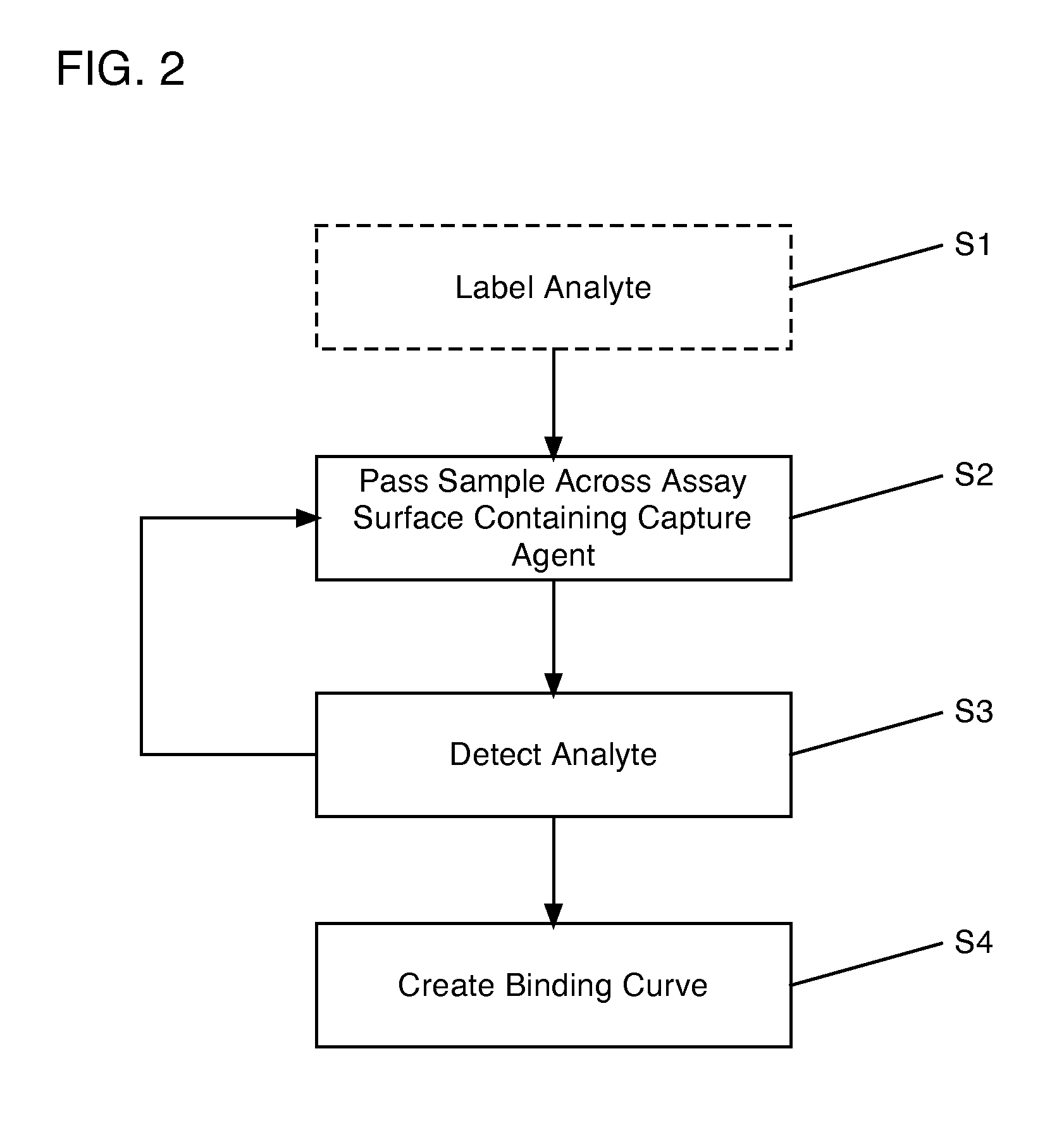Longitudinal assay
a technology of longitudinal assay and assay amplitude, which is applied in the direction of positive displacement liquid engine, laboratory glassware, instruments, etc., can solve the problems of overestimating the degree of specific binding, sacrifice the sensitivity of an assay, and inability to distinguish specific binding of an analyte from non-specific binding of non-analyte components of a tested sample, so as to improve the quantitative analysis of the target analytes
- Summary
- Abstract
- Description
- Claims
- Application Information
AI Technical Summary
Benefits of technology
Problems solved by technology
Method used
Image
Examples
Embodiment Construction
[0028]Turning now to the drawings, FIG. 1A shows a schematic top view of a cartridge 100 according to an embodiment of the invention. Cartridge 100 includes an assay surface 10 upon which are disposed a plurality of capture agent spots 20-28. Capture agents suitable for use in embodiments of the invention include, for example, antibodies (including autoantibodies), antigens (including native antigens), proteins, peptides, complexes of antibodies and antigens, complexes of proteins, lipids, cell or tissue lysates and fractions thereof, DNA, RNA, and other molecular or elemental moieties or complexes thereof, capable of binding to and forming a complex with an analyte of interest, as will be recognized by one skilled in the art. Capture agent spots 20-28 therefore comprise collections of capture agents adhered to assay surface 10, such that corresponding analytes (e.g., a protein, a peptide, an antibody, an auto-antibody, a native antigen, a protein complex (including complexes of ant...
PUM
 Login to View More
Login to View More Abstract
Description
Claims
Application Information
 Login to View More
Login to View More - R&D
- Intellectual Property
- Life Sciences
- Materials
- Tech Scout
- Unparalleled Data Quality
- Higher Quality Content
- 60% Fewer Hallucinations
Browse by: Latest US Patents, China's latest patents, Technical Efficacy Thesaurus, Application Domain, Technology Topic, Popular Technical Reports.
© 2025 PatSnap. All rights reserved.Legal|Privacy policy|Modern Slavery Act Transparency Statement|Sitemap|About US| Contact US: help@patsnap.com



